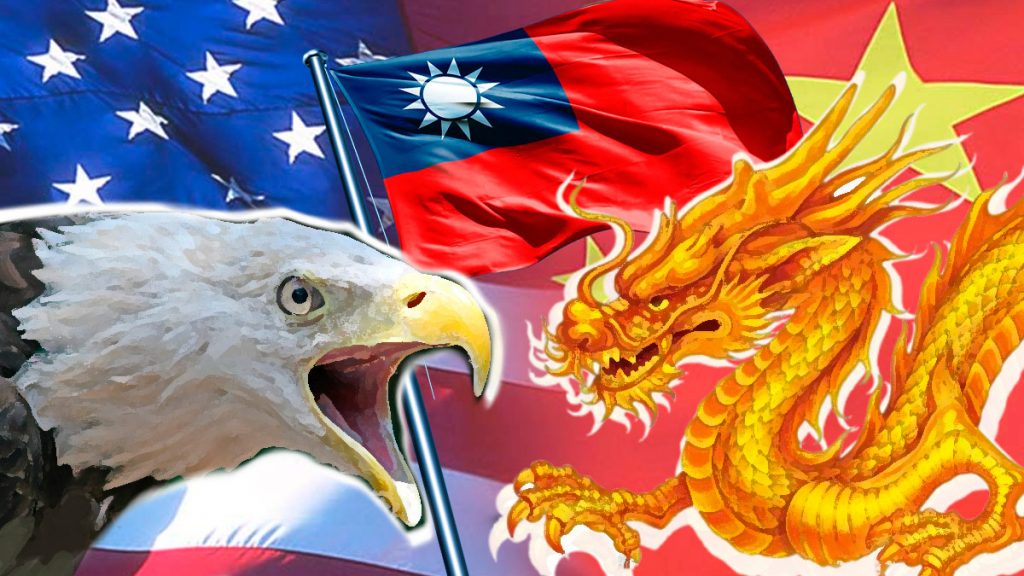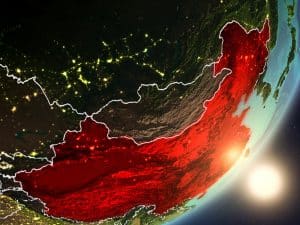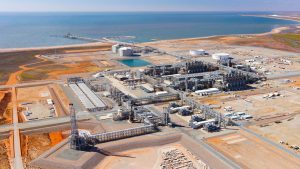On Tuesday, August 1, Nancy Pelosi — the Speaker of the U.S. House of Representatives — landed in Taiwan. This island territory is claimed by the People’s Republic of China as its own, which is why Pelosi’s visit was considered an act of aggression.
As soon as it became known that she might make a stopover in Taiwan’s capital of Taipei as part of her tour of Asian countries, Chinese representatives began warning of the harsh consequences that such a visit could have. Two days after the visit, China began extensive military exercises in the Taiwan Strait. The Chinese navy blocked almost all maritime traffic, and at least nine missiles were launched over Taiwan, several of them landing in Japan’s exclusive economic zone, according to Japanese authorities.
The visit escalated tensions not seen for decades at a particularly fraught moment in interstate relations, one that is dominated by the war in Ukraine with Russia, one of Beijing’s main allies. While for various reasons neither China nor the United States — let alone Taiwan — seem to have any intentions of further increasing the level of aggression, the chances of crossing the proverbial Rubicon and ending up in an unintended conflagration are as high as they can be.
Taiwan and Imperialism
Taiwan was formed as a separate state from China when the nationalist Kuomintang Party, which Mao Zedong’s Communist Party defeated in the 1949 revolution led by Mao Zedong’s Communist Party in 1949, decamped to the island and established a regime hostile to the People’s Republic. From then until 1971, Taiwan usurped China’s representation in the United Nations (UN), with the support of the United States and its allies. In October 1971, however, UN Resolution 2758 recognized the People’s Republic of China as “the only legitimate representatives of China to the United Nations” and declared that the UN would “expel forthwith the representatives of Chiang Kai-shek from the place which they unlawfully occupy at the United Nations.”
As part of a policy to isolate the Soviet Union, Richard Nixon traveled to Beijing in 1972 for a historic summit with Mao, beginning a new period in imperialist policy toward China and Taiwan known as “strategic ambiguity.” Basically, it consisted of withholding formal recognition of Taiwan — which had lost that recognition as a state in the UN — while expressing concerns regarding any threat to Beijing’s subjugation of Taiwan. This was all done even though Nixon never clarified whether the United States would come to Taipei’s aid if the Chinese invaded, although it never prevented him from providing Taiwan with extensive economic support and other resources.
In the context of this rapprochement with the United States and the dwindling of the Cold War, Chinese leader Deng Xiaoping proposed the doctrine of “one country, two systems,” taking the first steps toward capitalist restoration in China. The proposal was aimed at creating a framework for the restitution of the territories dominated by Britain and Portugal, Hong Kong and Macao, but was also aimed at Taiwan. But Taiwan has always rejected this approach. Leaders such as former president Lee Teng-hui counterposed a “two-state” theory, which Beijing rejected.
Growing hostility has characterized Sino-U.S. relations since Obama’s announcement 11 years ago of the “Pacific pivot.” In the years since, the United States has worked hard to remain a protagonist in Asia, aligning countries to side with it in every major dispute — and making Taiwan an increasing focus of attention. On the Chinese side, the issue of the reunification of China and Taiwan, an ever-present policy of the Chinese Communist Party (CCP) became more prominent once Xi Jinping took office in 2012, part of a more emphatic nationalism that has characterized his regime.
The situation has become even more fractious since 2016, with the election — shortly before Donald Trump entered the White House — of current Taiwanese president Tsai Ing-wen of the pro-independence Democratic Progressive Party, six months before Trump’s election. Trump broke with a presidential tradition that had been in place since Nixon by agreeing to a bilateral conversation with the Taiwanese leader, thus acknowledging her as a head of state. Trump continued with other gestures that began to unravel the “strategic ambiguity,” but without making it explicit.
The turn regarding Taiwan was part of a more offensive policy overall. In the past five years, the relatively latent global fight focused on Asia to gain or maintain influence and cement alliances has given way to more open friction. This was the case with Trump’s “trade wars,” which were in fact less about trade and more about the fight for primacy in key technologies, as is the dispute over 5G that continues to this day. These conflicts strained relations between the two countries even more, creating a situation that has remained unchanged since Biden’s inauguration.
The United States, which according to multiple measures still maintains its leadership in technology and innovation, has wasted no time in trying to block Beijing’s access to critical links needed for its technological development — while also watching with great concern China’s successful initiatives to close the gap or even take the lead in fields such as artificial intelligence. At the same time, the U.S. government is trying to concentrate federal resources, in collaboration with large private firms, to regain the initiative in areas where it has been overtaken, such as in microchip production. Curiously, it is Taiwan, not China, that took the lead in microchips years ago; in the last decade, the Taiwan Semiconductor Manufacturing Company (TSMC) has far surpassed companies such as Intel, historically the sector leader, because those companies could not sustain the pace of investment required to stay in the race and remain profitable. But China is also lurking with its own innovations in this strategic arena. The Biden administration intends to regain prominence in the field, although the $280 billion fund just established seems meager compared to its proposed efforts.1Translator’s note: In late July, Congress passed the $280 billion Creating Helpful Incentives to Produce Semiconductors (CHIPS) Act, $52 billion of which consists of subsidies and tax credits for any global chip manufacturer that either establishes new operations in the United States or expands existing operations. The remainder of the money is slated for scientific research in areas such as artificial intelligence, robotics, and quantum computing. President Biden signed the bill into law on August 2.
Although Russia’s invasion of Ukraine opened another front to address, Biden has not taken his eye off China. In fact, the revitalization of NATO thanks to the war has breathed new life into U.S. strategy. Like his predecessor, Biden has continued with the gestures that call “strategic ambiguity” into question. In May, while in Tokyo, he warned China against any attempt to take Taiwan by force, characterizing the idea as “just not appropriate.” “Comparing a potential invasion by China to Russia’s invasion of Ukraine,” he warned, “it will dislocate the entire region.” And he noted that “Russia has to pay a long-term price for its actions,” he said, emphasizing that it “would be an act similar to what has happened in Ukraine,” referencing the sanctions against Russia by the United States and its NATO allies and implying it sends a “signal … to China about the cost of attempting to take Taiwan by force.”
It is no surprise, then, that both Chinese and U.S. strategists are plotting out scenarios in which a dispute over Taiwan leads to direct war between the United States and China. For U.S. imperialism, such scenarios don’t typically end with reassuring results.
Reasons Not to Escalate
While the conflict over Taiwan has long occupied the attention of military leaders, Pelosi’s stopover in Taipei seems to have upped the ante and triggered unexpected reactions. The last time a visit by a U.S. official of equivalent rank took place was in 1997, when Newt Gingrich, then also Speaker of the House, made a stop. But, as Claudia Cinatti observes, “the context could not be more different. Domestically, while Pelosi and Biden are of the same party, Gingrich was a staunch opponent of Democratic administration of Bill Clinton. And at that time, the consensus of the imperialist establishment was to integrate China into the ‘neoliberal order’” by pushing for its entry into the World Trade Organization.
Pelosi’s decision, taken without consultation, is a sign of the divisions that prevail in the U.S. bipartisan regime and of the current administration’s weakness — which, except for the probably ephemeral achievement of reviving NATO and the commitment of European partners thanks to the war in Ukraine, hasn’t had many successes and could suffer a heavy defeat in November’s midterm elections. Biden made it known that he discouraged Pelosi from landing in Taiwan, and intelligence and diplomatic agencies also advised against doing so. While the rivalry with China is at the center of all U.S. strategic considerations right now, this does not appear to be the best time to encourage an open clash between China and Taiwan. But the president never formally asked Pelosi not to make the visit. Fear of offering the Republicans a new flank in the middle of the election campaign prevailed over all other considerations. He also sought to avoid cracks in the Democratic ranks, allowing the party’s hawks to supersede the considerations of the head of state (which can be advantageous at times, but also sometimes dangerous, as it is this time). As international affairs expert Ian Bremmer observed, with some irony, Biden “tried to stop Nancy Pelosi’s visit, but not enough to start a fight with her. Instead, he risks a fight with China.”
Biden’s difficulty with timing in the most strategic dispute, conditioned by the upcoming elections and problems in his own administration, is another glaring example of the challenges that the main imperialist power continues to confront when it comes to putting together a coherent intervention. The basic conflict in the U.S. political establishment is this: What course should we follow to try to reverse the trend of a gradual but steady decline in U.S. power and a change in the center of the gravity of the capitalist world economy, oriented toward China?
Provoking China right now may, as New York Times columnist Thomas Friedman recently observed, create dangerous spillovers into the war in Ukraine, in which Russia is managing to gain a foothold in the Donbas — but at a much greater cost than Putin initially anticipated. While China, like many other countries, did not go along with the NATO-driven economic sanctions, it does appear to have taken note of the warnings issued by the United States about any assistance to Russia. Friedman reports from a “senior U.S. official” that that Biden “personally told President Xi Jinping that if China entered the war in Ukraine on Russia’s side, Beijing would be risking access to its two most important export markets — the United States and the European Union.” China, Friedman continues, “has responded by not providing military aid to Putin — at a time when the U.S. and NATO have been giving Ukraine intelligence support and a significant number of advanced weapons.”
The risk is not just a clash with China in the Taiwan Strait, but that Xi will change his policy, more actively collaborating with his Russian ally and thus producing an even more adverse outcome in Ukraine than at present, with Russia controlling 20 percent of the country. From the U.S. perspective, a war that drags on and requires greater effort from Russia, with all the wear and tear that will cause, is not inconvenient. If China intervenes more actively to help rebuild the Russian army’s supplies and keep its economy afloat, the war effort may become more manageable and Putin may again increase his ambitions by going beyond what he has achieved so far.
For China, Pelosi’s visit provided an opportunity for a striking military display. Amid Xi’s preparations to extend his time as China’s leader, the friction with the United States allows him to give free rein to nationalist passions. He would become the first leader since Deng to rule for more than 10 years, seeking an eventual indefinite extension of his presidency.
This is, though, a risky time to initiate an escalation. China’s economy is on track to have a second year of the worst growth in a decade, surpassed only by 2020, when the pandemic emerged. The difficulties of controlling new outbreaks this year, to which Beijing has responded with its “zero Covid” policy, has led to lockdowns in many cities for weeks at a time. In the second quarter of this year, the economy grew only 0.4 percent compared to the same period in 2021, and fell 2.6 percent compared to the first quarter of this year — clearly a result of the health restrictions. The forecast is that this year GDP will not grow more than 4 percent. It’s a figure that other countries might envy but is much lower than China’s typical performance and below what had been expected — until recently.
It is more than the “zero Covid” policy that is ravaging the economy, however. The deflation of the real estate bubble, largely driven by the CCP government when it forced firms in the sector to lower their debt leverage levels, and which brought firms such as Evergrande to the brink of bankruptcy, continues to spread. Construction delays caused by financing difficulties within the framework of government restrictions on borrowing, have led many homebuyers to default on their mortgages. Houses in China are paid for in advance, and builders have been relying more and more on these funds to build. The “mortgage boycott” threatens to cripple construction even further for lack of funds, and leave more buyers angry.
The possibility of responding to economic setbacks by restimulating growth through debt — a recourse to which the CCP government has resorted on many occasions — becomes more complex as central banks around the world, and especially the U.S. Federal Reserve, raise rates to deal with inflation and become asset “vacuum cleaners” seeking high as well as reliable yields. Expansionary policy under such conditions can stimulate capital outflows, despite the controls that limit them. The Chinese authorities are well aware of what happened in 2015, when asset flight accelerated abruptly.
Domestic tensions often spur international aggressiveness, as we have often seen. Today’s situation finds Xi with several open fronts to accelerate the timing of this war, for which all the actors have long been preparing.
Another Leap — with No Turning Back
The logic of the events, once they have begun, does not necessarily reflect the motivations of the main actors in this drama. In the coming days or weeks, we will see whether the overlapping provocations are answered only with diplomatic reproaches, as has been happening, or whether things go a step further. For now, the Chinese government has already announced that it is suspending dialogue with the United States over climate change, which could have serious consequences.
Although war is not where we are yet, the exacerbated rivalry has certainly taken a step closer. On both sides, the past days have seen a sort of dress rehearsal, or first act, of a conflagration toward which they continue to advance — and it will continue to produce actions on the knife-edge.
Looking at the bigger picture, we see that the weight of geopolitical disputes continues to grow over a world capitalist economy that in recent decades has seen an unprecedented internationalization of production, the benefits of which have been substantial for the major multinationals that dominate world trade — most of them based in the United States and the European Union, although Chinese firms increasingly show up in the rankings of leading firms. The reluctance of big capital to surrender these benefits clashes with the growing aggressiveness of the countries involved; their economic sanctions, still localized military clashes, and preparations for more global conflicts torpedo economic integration or at least forces it to be disciplined under new strategies that favor investing in other countries based on alignments and not necessarily on where the costs are lowest. This does not bode well for reducing production costs in order to prevail in global competition.
In this rarefied climate, there will be no turning back from the Pelosi affair and Xi’s war games — just as there was no turning back from Trump’s “trade wars.” The conflict is less a hypothesis and more a palpable perspective, creating a race to secure allies and equip oneself, without ever neglecting the economic and innovation fronts. Those are decisive in any large-scale conflict such as this, which beyond the immediate trigger in Taiwan, aims at revising how world capitalism is ordered and who dominates.
When the war broke out in Ukraine, I wrote that “the trend toward world disorder takes a qualitative leap with this war. … We are one step closer to the confrontations for which U.S. imperialism has been preparing for a long time with the rising Eastern power.” The war games in the Taiwan Strait confirm that this is the sign of the times.
First published in Spanish on August 7 in Ideas de Izquierda.
Translation by Scott Cooper
Notes
| ↑1 | Translator’s note: In late July, Congress passed the $280 billion Creating Helpful Incentives to Produce Semiconductors (CHIPS) Act, $52 billion of which consists of subsidies and tax credits for any global chip manufacturer that either establishes new operations in the United States or expands existing operations. The remainder of the money is slated for scientific research in areas such as artificial intelligence, robotics, and quantum computing. President Biden signed the bill into law on August 2. |
|---|











